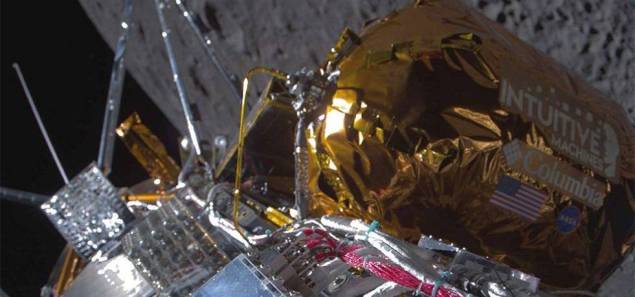The spacecraft landed on its side, which changed how the solar panels are positioned in relation to the sun, ending Intuitive Machines’ first trip to the moon early. The company said this in an update on Tuesday morning.
The flight controllers were still trying to figure out how much life was left in the battery, which could be 10 to 20 hours. The spacecraft was supposed to work for seven to ten days after it arrived on the moon five days ago.
Last week, Intuitive Machines made history when it landed its spaceship, Odysseus, close to the south pole of the moon. The lander is the first piece of American technology to touch the moon’s surface since the last Apollo flight with people on board in 1972. It’s also the first ship ever built and run by a private company to land on the moon, and it’s the closest a lander has ever come to the south pole of the moon.
However, the big success was somewhat dashed when, the next day, company officials told the press on TV that the spaceship had actually tipped over while landing. Steve Altemus, CEO of Intuitive Machines, said that Odysseus may not have gone down straight, but rather at an angle. Besides that, it fell a little too quickly, which he thought might have let one of the feet catch on a rock or crack and break.
Based on how much power the solar panels were making, the ship probably came to a rest a little off-level on a rock, he said. NASA’s Lunar Reconnaissance Orbiter, a robot that has been orbiting the moon and collecting data on its surface for more than ten years, took pictures of Odysseus on the moon’s surface that proved it landed just 1.5 kilometers from where it was supposed to, near the south pole of the moon.
Odysseus is still sending science data and pictures linked to the payloads on board, but the company didn’t say if the data rates have been slowed down because of where the lander is located. Two of the spacecraft’s antennae are now looking at the ground, but none of the science payloads are on the panel that faces the dark side of the moon.
It’s still not clear if this is hurting the collection of any data, but Altemus said that the loss of the antennae was a “limiter.”
He told them last Friday, “Those antennas can’t send data back to Earth.” “That really does put a limit on it.” It’s on its side, which I think makes it hardest for us to talk to each other and get the right information so that we can achieve our goal.
The historic landing of Intuitive Machines was made possible in large part by the flight controllers’ lightning-fast thinking. They had to come up with a new way to navigate after discovering that the spacecraft’s laser range finders, which collect important landing data like altitude and horizontal velocity, were not working. Instead, they used a doppler lidar technology demonstrator from NASA, which was one of the lander’s payloads, to help them land the car on the surface.
Later, the company said that the laser range finders stopped working because of mistakes made by people trying to save time and money, not because of any technology problems. The engineers at Intuitive Machines, led by Mike Hansen, told Reuters yesterday that they didn’t test fire the laser system on the ground because it would have been too expensive and taken too long. Also, engineers forgot to flip a physical safety switch on the machine before it was launched.
Also Read: When Intuitive Machines Lands The First Business Spacecraft On The Moon, It Makes History
Tomorrow, Intuitive Machines and NASA leaders will hold a second live news conference to talk about changes to the plan.
What do you say about this story? Visit Parhlo World For more.


